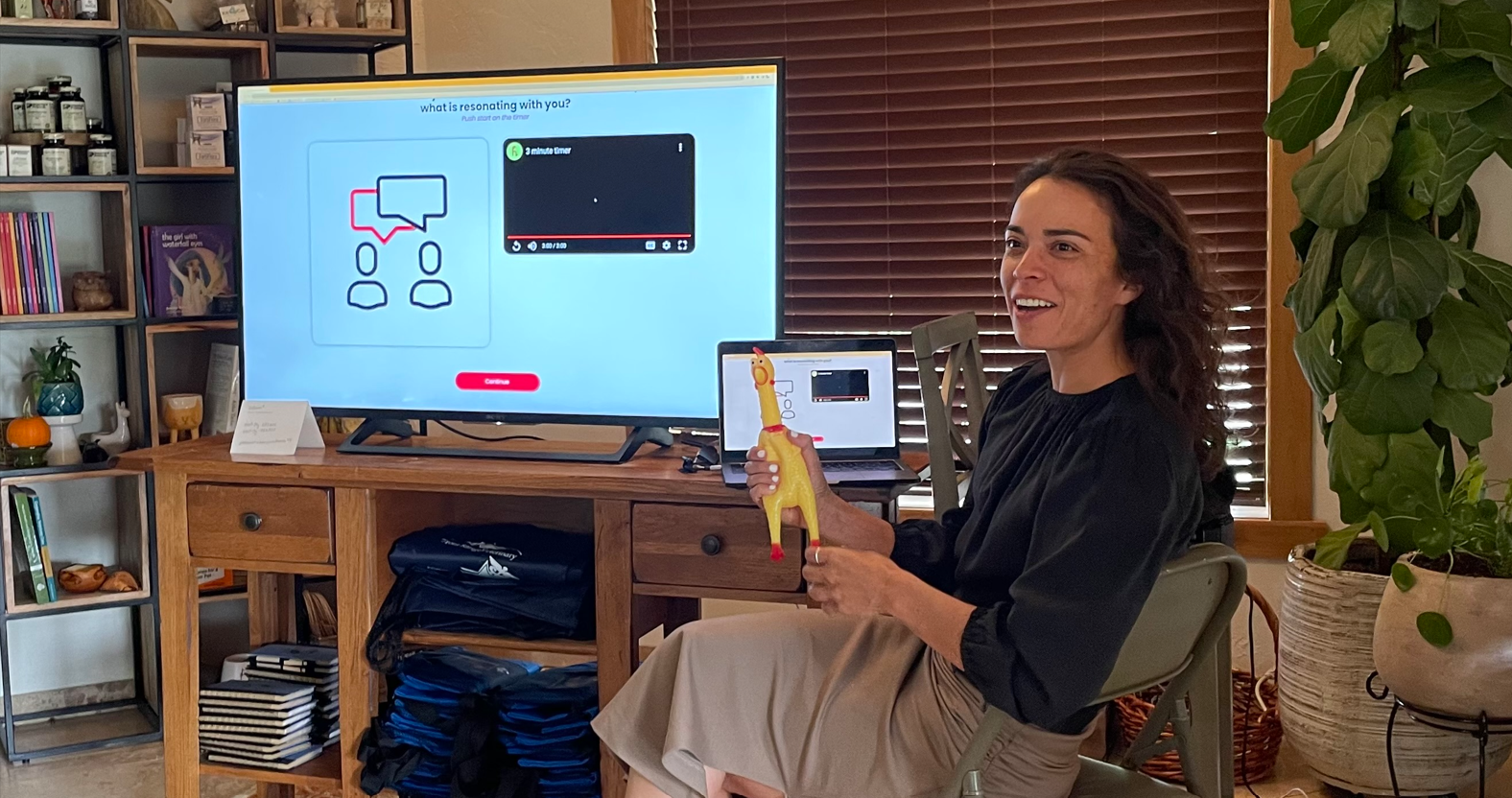Leaders from Mental Health America of Indiana, Indiana’s mental health advocacy leader, share their experience of the Leading for Wellbeing and Performance ‘Workshop in a Box’.
The context: Setting leaders and teams up to provide essential crisis support and mental health advocacy is a challenge in a long line of crucial challenges faced by this team of leaders. MHAI team members were tasked with creating and operating the Be Well Crisis Helpline, the state of Indiana's response to the U.S. Federal COVID-19 Disaster Declaration. Under the FEMA/SAMHSA Crisis Counseling and Technical Assistance Program (CCP), through the state of Indiana, the team developed a 24/7 telephonic crisis line in real-time. To date, this team has supported over 70,000 individuals in crisis.
Supporting their leaders and teams through the continued challenge of providing crisis support was an absolute priority for Jennifer Stansberry-Miller, CE, Mental Health America of Indiana.

Below are some thoughts from Jennifer and then members of her team. These thoughts provide a great sense of the ‘workshop in a box’ experience.
“The absolute highlights for me were the 'aha moments' when I could see my leaders kick back in their chairs and nod! Just amazing.”
Jennifer Stansberry-Miller, CE, Mental Health America of Indiana
What Jennifer’s team of leaders had to say:
“I was the person running the session – there’s no facilitation needed, so it was like being a ‘ghost facilitator.’ I wanted to share some of my thoughts beforehand and then my experience. I wondered how would this work without a live person, and how the timing would work? But Hummingly has it all beautifully figured out. I loved that Hummingly has timers and I was able to actually participate and not stress about anything. Everything just flowed so easily – I could just click along the way. I also wanted to know what was coming up next along the way, so I liked being able to get in and have a look before we ran the workshop, just for my own comfort. So, if someone else has similar thoughts before running the workshop, they can be reassured – it’s a great experience and it’s so well designed. It put my worries to rest. Now, with the ‘workshop in a box’ approach, I’d sign up for it in a heartbeat.”
“I thought there would be handouts, and you are going to read through it and write your notes. But it was not like that – it was really engaging. The expectation was heightened when we saw the different components of the box. There was a lot of interaction and it was all broken into small digestible chunks. The cards helped too to make us feel accountable for where we were at with ourselves with the whole process.”
“It wasn’t a training like – ‘here you learnt it, goodbye.’ What stuck for me is knowing that I had a physical resource behind me that I can fall back on and use for my team. I have the cards right here at my desk, even just for “go to” check-ins and a fall-back for training and for getting to know my team more in-depth. I have a tangible tool I can put in my toolkit. Even if I go to another job, it is literally like a physical toolkit that you can rely on. I like that.”
“It wasn’t your typical note-taking – just sit in your chair. It was very interactive – and we were able to come together as a team and all engage in a way that enabled us to get to know each other more. Like everybody else, I took feedback that it can be utilized in my work but also in my personal life. And being able to physically take something away from the training – the cards.”
"I really liked that it was so interactive because we had only been together as a group one other time – over dinner. I appreciated how interactive it is. On a lighter note, I really enjoyed the squeaky chicken!”
“I don’t mind sharing what I have done since. I am naturally very direct and I have learned that that’s me, and that’s my stuff, and but it’s not what I should put on other people. I need to slow down and soften my approach because I am failing at explaining. If I’m not making something clear to my staff, that is a fault within myself, not a fault within them. So, for myself, I have taken to slowing down and watching my words more closely. I’ve changed my approach to gear my communication more towards my team. And I have utilized the cards in our coffee hours with our team for icebreakers and takeaways, as well as in my personal life.”



